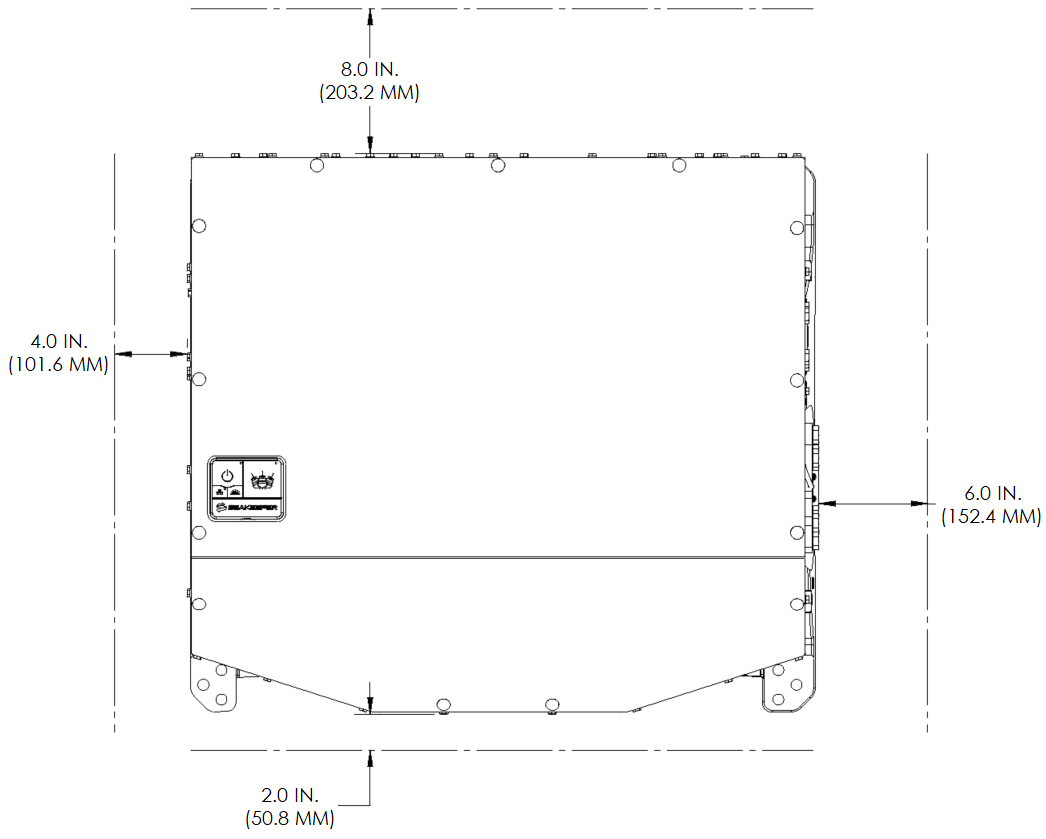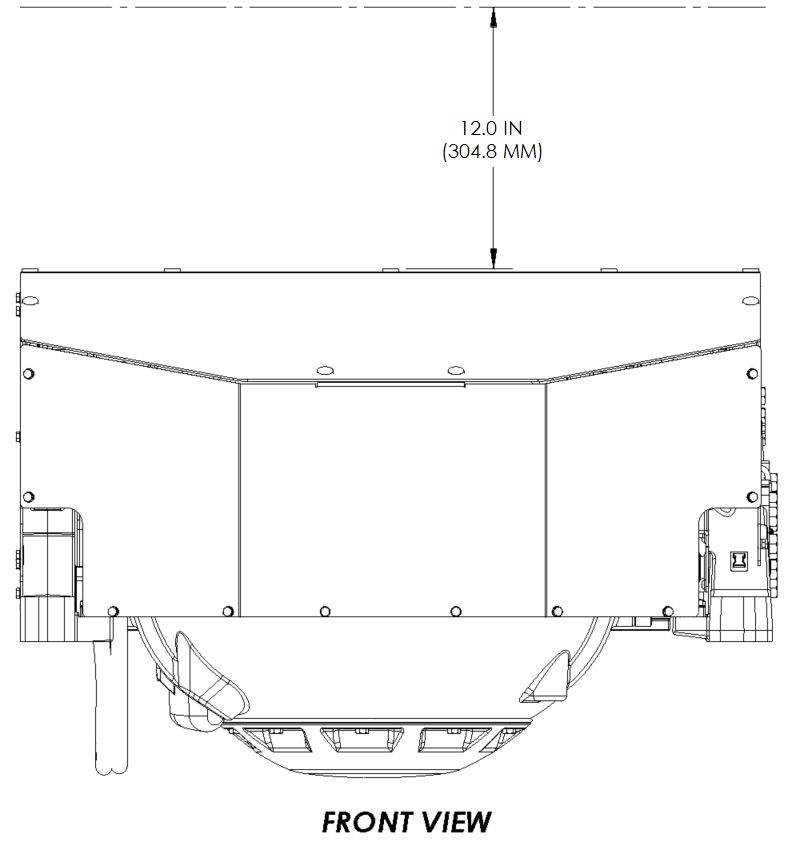Seakeeper 10 Installation Manual (90841-1)
2.2 Selection of Installation Location

The Seakeeper should be installed aft of amidships to minimize high acceleration loadings due to hull/wave impacts during operation at high speed or in large waves. If the only possible Seakeeper location is forward of amidships then the installer should have Seakeeper review the installation location prior to finalizing the design.
Seakeeper can only assess installation location regarding its impact on Seakeeper operation and serviceability. Seakeeper cannot determine how the installation location will affect the vessel static or directional stability other than cyclic roll reduction. The Installer is responsible for considering the Seakeeper’s effect on the Center of Gravity location, trim, overall stability, and performance of the vessel.
The Installer is solely responsible for ensuring that the Seakeeper is properly located and installed on the vessel foundation with an adequate margin of safety for the specified design loads and vessel operating characteristics.
Selection of mounting location of the Seakeeper should consider the following desirable features:
- Adequate service access for scheduled maintenances and overhaul of the Seakeeper 10 is required. See Figure 4 and Drawing No. 90831 – Seakeeper 10 Bolt-In Installation Details for service clearance requirements.
- The Seakeeper should be installed in a dry space to minimize effects of corrosion.
- The minimum service clearances shown are based on the size of serviceable components and tools required for removal and replacement of these components including field replaceable bearings. The clearances do not consider how the technician will be positioned for access to these areas. Access for a technician must be considered by the installer .
- The clearance and access requirements do not need to be permanent and can be provided via hatches, removable panels, or other temporary means where applicable.
- The installer/designer should consider all these factors for serviceability when defining the installation arrangement.
- Top down access must be incorporated into installation design to allow for adequate regular maintenance, service, and repair.


VIEWS SHOWING RECOMMENDED CLEARANCES AROUND THE SEAKEEPER FOR USE OF HANDTOOLS, EASE OF MAINTENANCE, INSTALLATION, AND PROPER OPERATION.
Figure 3 – Seakeeper 10 Installed Clearance Considerations
2.2.1 Overhead and Service Clearance Considerations
Access above the Seakeeper 10 must be considered for maintenance and service space. Figure 4 shows space considerations around and above Seakeepers installed below deck surface.

2.2.2 Noise/Soundproofing
Seakeeper 10 noise has been measured under steady state conditions (no wave load) in Seakeeper‘s Engineering Lab. The steady state noise is typically <72 dCB at 1 meter. As the frequencies emitting the highest sound pressures are low (like other marine machinery), it is recommended that the Seakeeper be installed in an enclosed space such as a machinery space, lazarette, or bilge. If additional noise reduction is needed, sound proofing insulation can be used in the space around the Seakeeper unit.